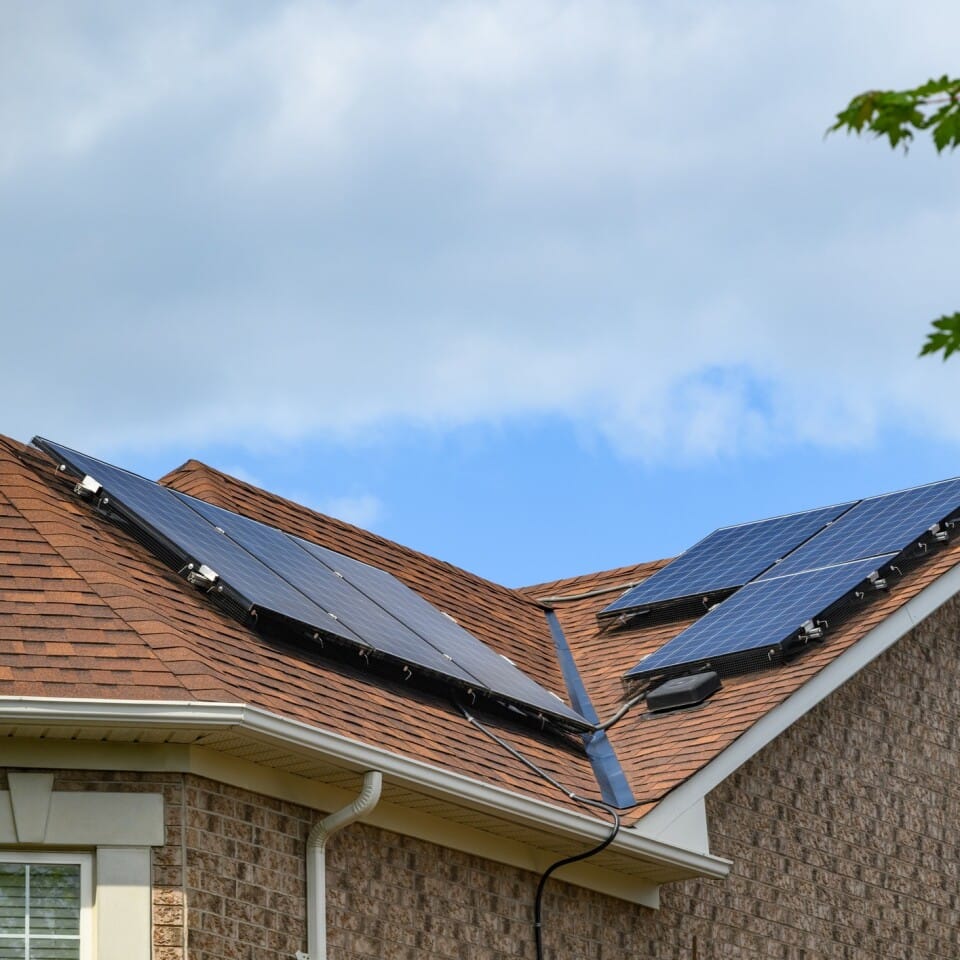
When Zeynin Juma and her husband bought their bungalow in southwest Calgary in 2021, they knew it was the right fit for their family’s future. Nestled in a quiet crescent, the 1958 home offered space, privacy, and even the occasional deer in the yard. But moving in also came with new needs: a major fireplace installation, added air conditioning, and higher electricity use than expected. To keep their home comfortable and future-proof while managing costs, Zeynin turned to solar power. “Our place gets so much sun—it just made sense,” she says. “Solar was really the only option that could offset the added energy load.”
From Greener Homes to Calgary’s CEIP
Zeynin first accessed the federal Greener Homes program in 2021. Through it, she received a $5,000 grant and a $25,000 loan to cover her initial rooftop solar system, installed on her detached garage by a local contractor. But the new electric fireplace drew far more energy than expected, leaving Zeynin with both a monthly electricity bill and the solar loan repayment. When she tried to apply for a second Greener Homes loan in 2022, she learned that homeowners were only eligible once.
“That’s when our contractor told me about the City of Calgary’s Residential Clean Energy Improvement Program (CEIP),” Zeynin recalls. “It was a lifesaver.” Through the City of Calgary, she secured another $17,000 to expand the solar system. The loan was added to her property taxes, spreading repayments over 20 years at a low interest rate. “It only added about 50 dollars a month. That made it doable,” she says

White-glove support
Zeynin describes Calgary’s process as “white glove” compared to her earlier experience. With Greener Homes, she had to pay contractors upfront, raise her credit card limit, and wait for reimbursement. “CEIP took care of everything. They dealt directly with the installer, managed payments, collected serial numbers—things I didn’t even understand. I just paid a couple hundred dollars for the energy assessment and that was it,” Zeynin explains. “It was easy, stress-free, and made sense on paper.”
Comfort, food and joy
The impact goes beyond bills. The upgraded solar system has made the home more comfortable, especially in the basement, which now maintains a steady, livable temperature. It has also fueled Zeynin’s passion for gardening. With reliable, affordable electricity, she and her husband started an indoor garden. “We routinely grow fresh lettuce, cilantro, fennel, and even beets in the basement—even when it’s snowing outside,” she says. “You can’t really put a price tag on that joy.” Looking ahead, Zeynin is considering how solar could support an electric vehicle, as well as future upgrades on her rental duplex. The City of Calgary has already approved both sides of the property for financing, opening the door to lower costs and healthier homes for her tenants.
Advice to others
Zeynin encourages other homeowners to act quickly and not get hung up on the upfront numbers. “Do it now. Don’t wait. It might not look like it makes sense on paper in the first few months, but by year one you really see the benefits,” she says. “And if it doesn’t cover everything the first time, you can always go back. There are programs to help you get it right.” For Zeynin, the decision was both practical and personal. “Solar brings me huge joy,” she says. “Living in Calgary, with so much sun, it just makes sense.”
Calgary's Clean Energy Improvement Program is funded by the Green Municipal Fund (GMF), a program of the Federation of Canadian Municipalities (FCM).
Want to explore all GMF-funded projects? Check out the Projects Database for a complete overview of funded projects and get inspired by municipalities of all sizes, across Canada.

